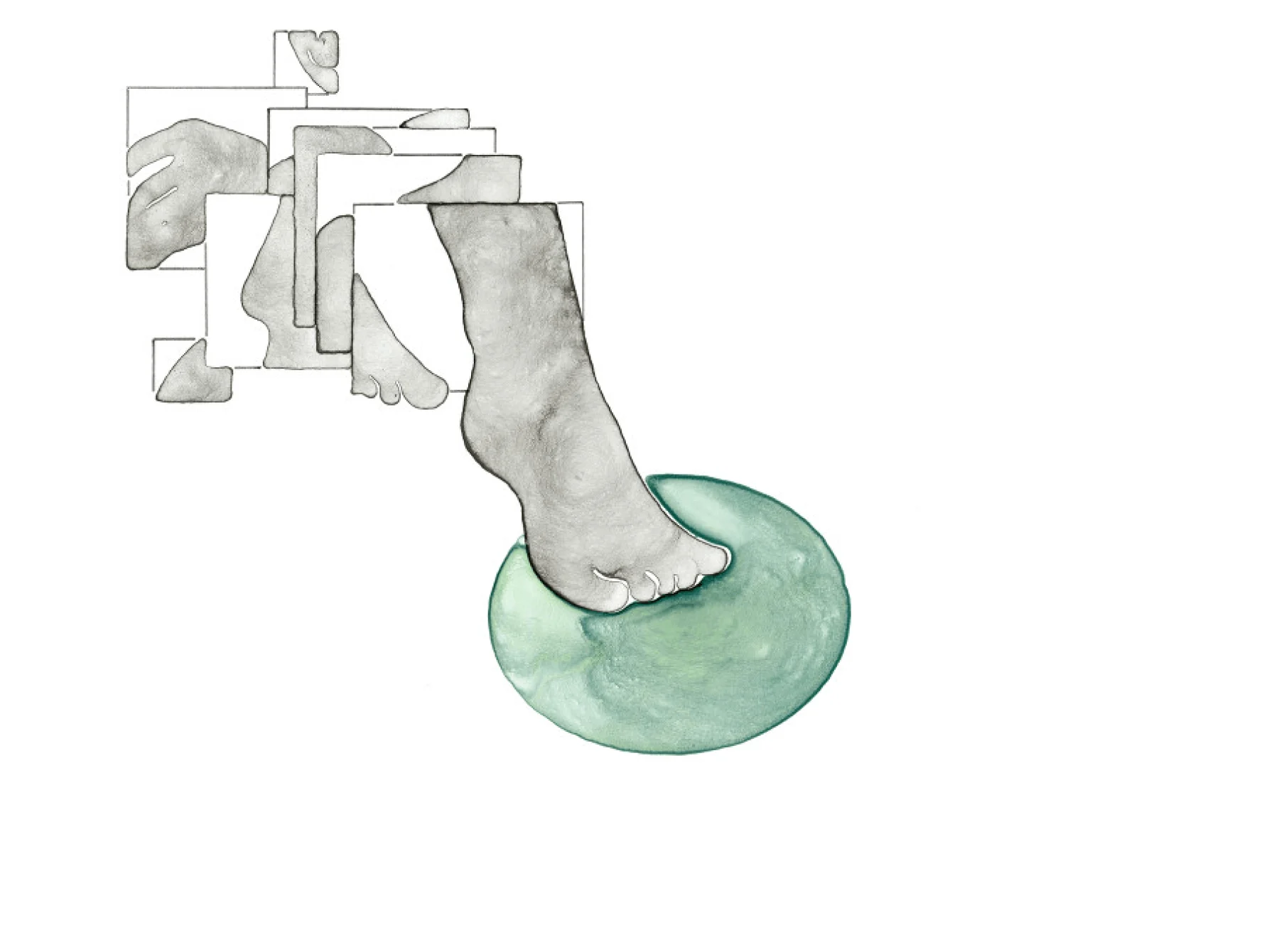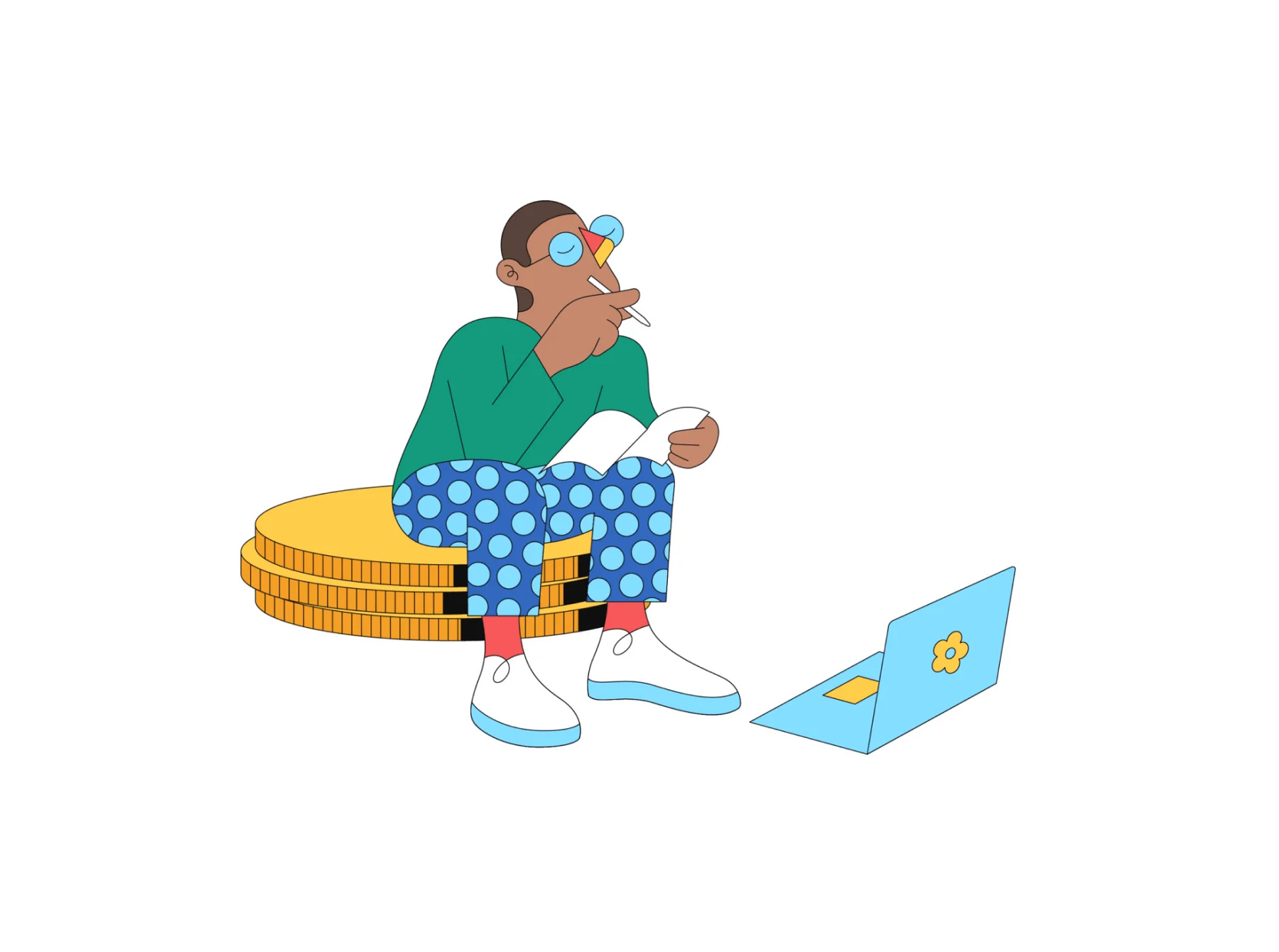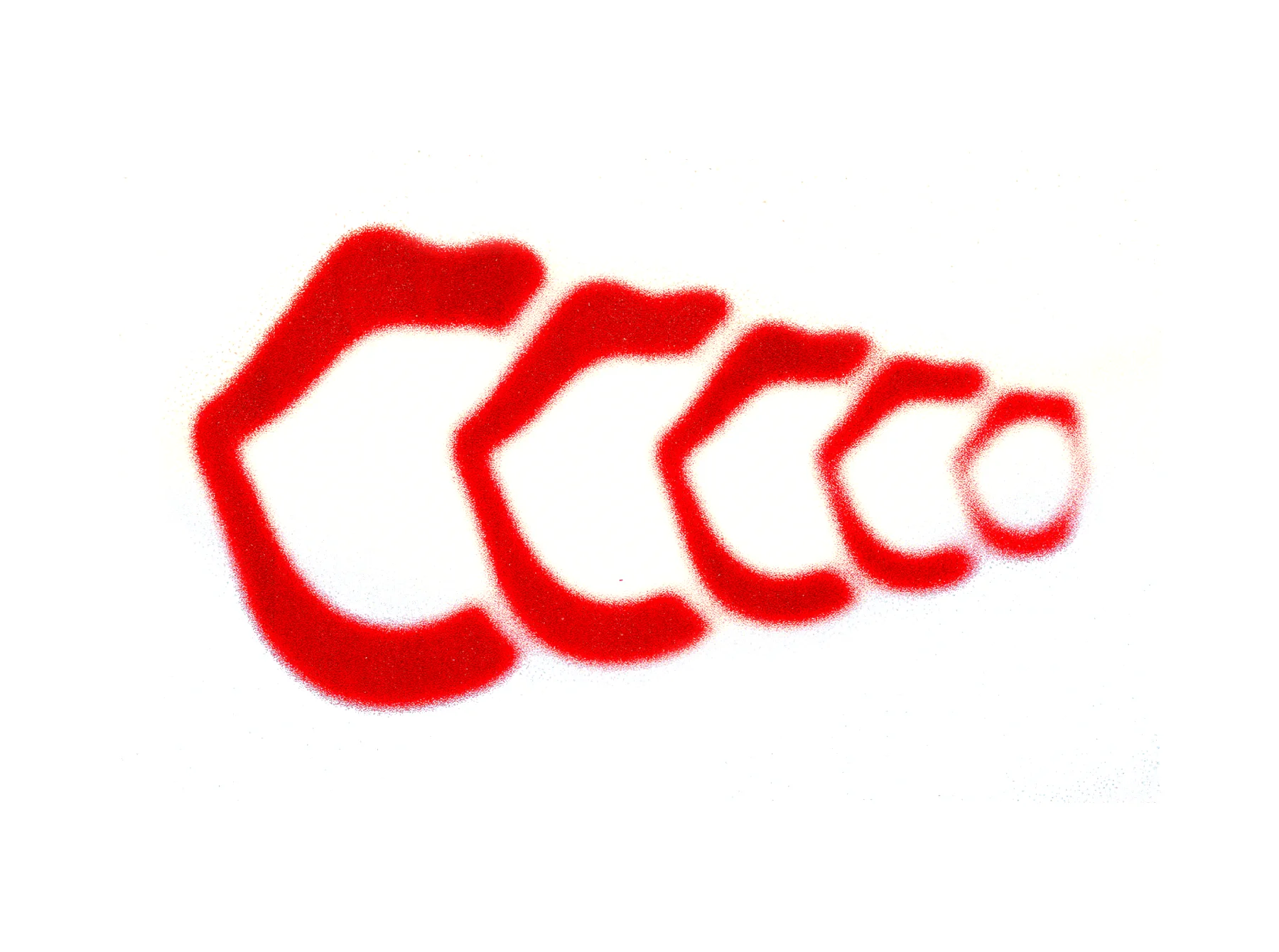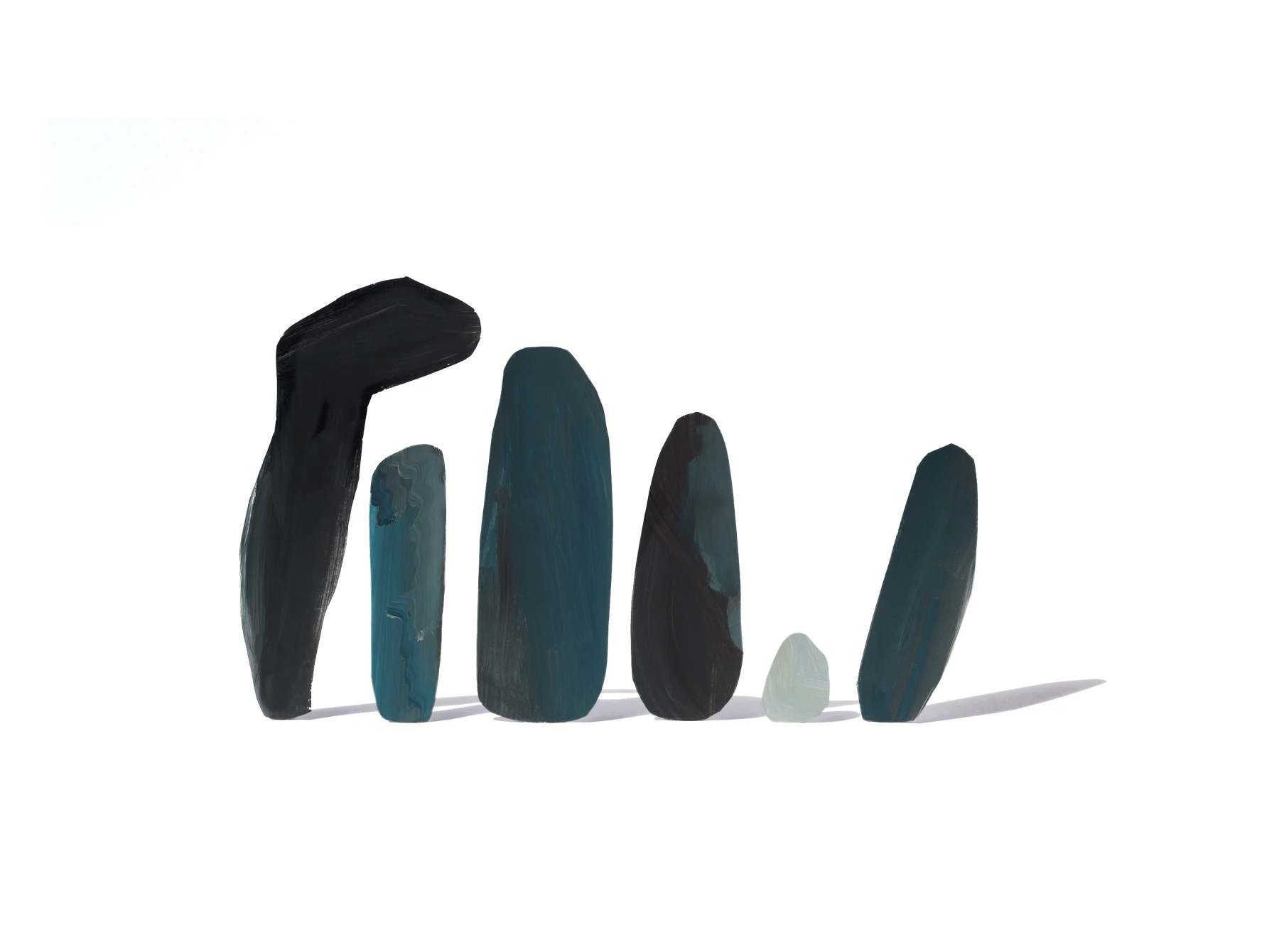
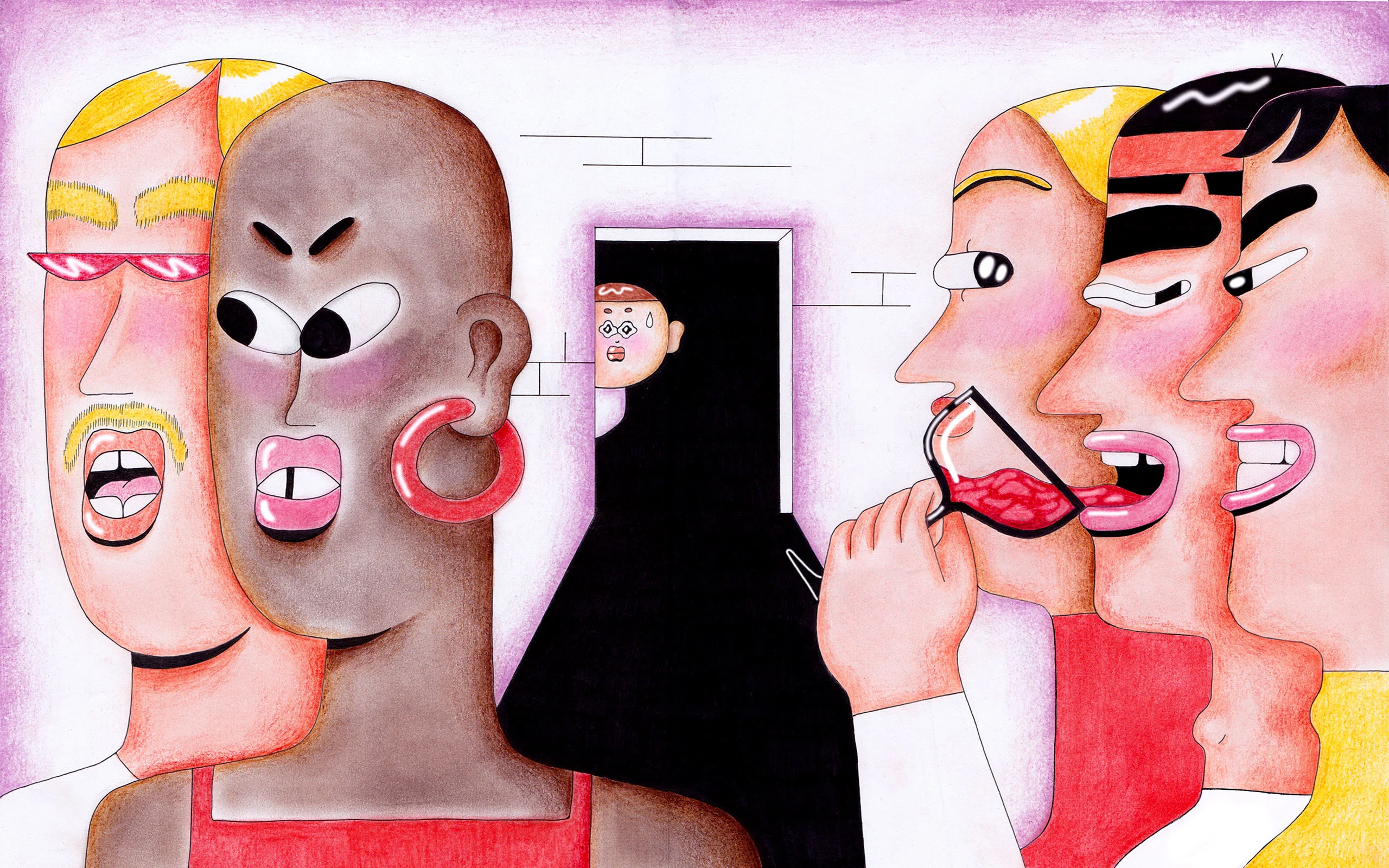
When you first start out in the creative industries, there is a lot of received wisdom. This is how it works. That’s just the way it is. But how true are these truisms? We partnered up with Lecture in Progress to look at six myths you often hear when it comes to creative careers and find out how true, if at all, they really are.
Illustrations by Haein Kim.
Myth 3: It’s not what you know, it’s who you know
Open Sesame
There’s a trope in a lot of films that you’re bound to recognise. Let me set the scene here. You’re standing in front of an old, bolted, wooden door with a rectangular slit in its centre. You – our creative protagonist – knock. There’s a pause. The slit slowly slides open, and the menacing eyes of a big, scary-looking guard bulge behind it. A growl follows: “Password?” Gulp. Okay, so this is all admittedly a little cartoony; let’s make things a little more real. Take a closer look at the label above the door. “The Creative Industry™” Ah. There it is.
We love talking about doors in the creative industry. It’s all about opening doors, getting your foot in doors, the doors that opportunity knocks on. Doors, doors, doors. Finding an ‘in’ can be elusive, though, especially when you’re just starting out. And unfortunately, it’s never really as simple as knowing a password (although, let’s be honest, if there was one, it’d probably be something like ‘Helvetica,’ wouldn’t it.) No, ideally, you’ll want to know someone on the inside. Someone who’s happy to push that guard aside and let you in, all “Hey, they’re with me!” style. Who you know helps. It helps a lot.

Getting past the gatekeepers
Even actress Maisie Williams (yes, from Game of Thrones) called out the dominance of ‘who-you-know’ culture last year, with the launch of her very own networking app, Daisie. “Success in the creative industries has been wholly dependent on luck and ‘in’s’ to the industry,” she told The Times earlier this year. Pacing across the stage during her TED talk, she continued: “The industry is built with gatekeepers holding all of the power, and selecting who they deem talented enough to advance to the next level.”
She’s not alone in thinking this. “Meritocracy is a myth,” agrees Sereena Abbassi, the worldwide head of culture and inclusion at advertising agency, M&C Saatchi. “You can think of a certain industry as a fortress that doesn’t let other people in. It’s no different to how we are as a society. We’re refusing to let different types of people in because we’re scared that they’re going to dilute or take what we have.”
And, ironically, if this is all starting to sound a bit Game of Thrones, that’s because it kind of is. The barriers to the ‘fortress’ are high, which becomes all the more apparent when you look at the data. In 2017, government figures found that the UK creative industry alone remains overwhelmingly 90% white and nearly 60% male. It’s not just about money, of course, but these numbers are all the more baffling when you consider recent studies proving the fact that more diverse companies have healthier bottom lines.
And then there’s just plain nepotism. We’ve seen the impact of this on industries like advertising, fashion, theatre and even Bollywood. You only need look at the recent US college admissions scandal or the current advisors to the President of the United States to know that being born of a dynasty like the Beckhams' can fast-track a creative career. “The fact that you haven’t got to where you are just based on hard work?” posits Sereena, “That’s a difficult pill to swallow.”
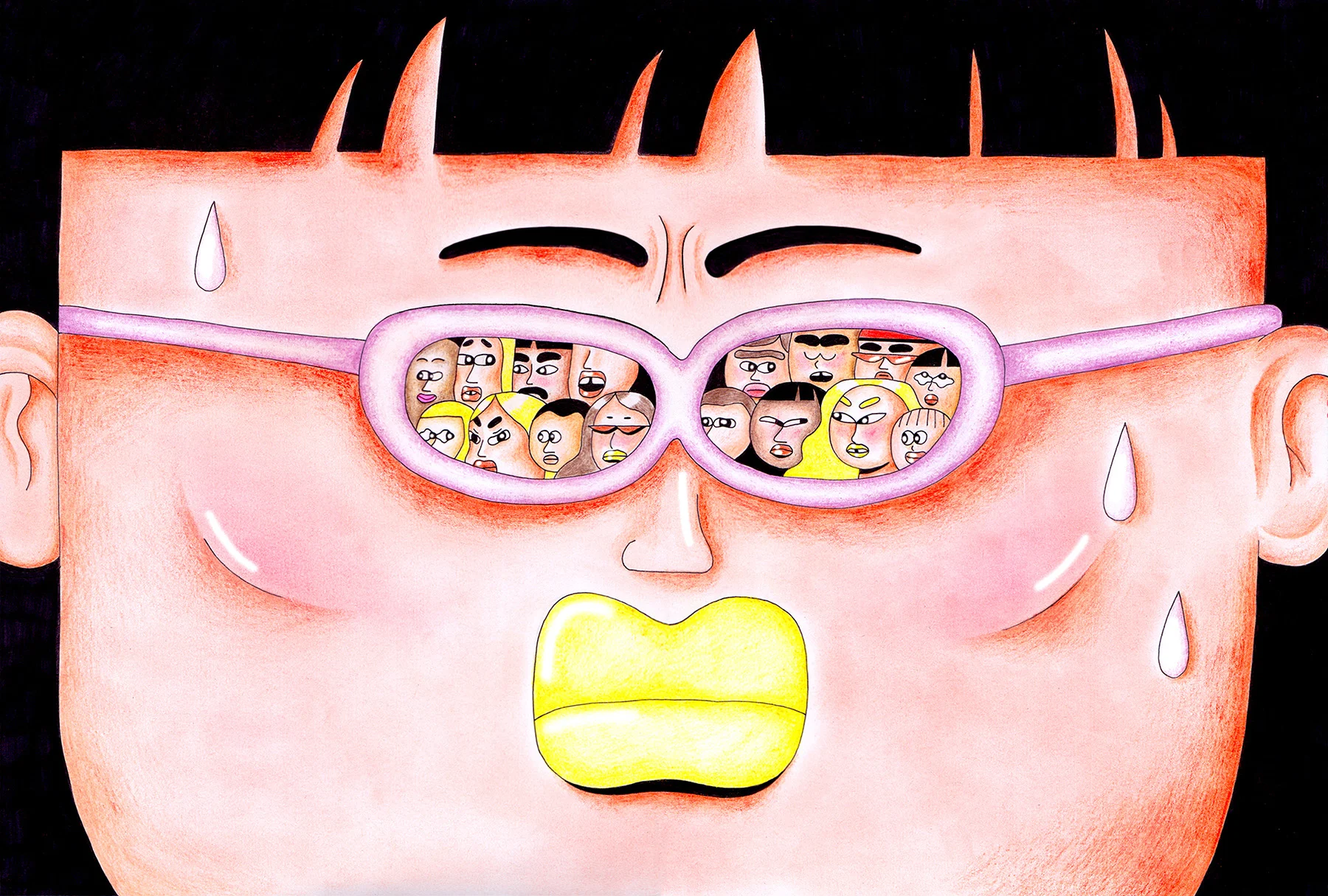
Click here to network
The problem is, for a lot of creatives, making connections from scratch means having to do something that doesn’t always come so naturally: networking. The sheer thought of this can make even the most talented and confident creative break into a sweat. But in a digitally drenched 2019, the fact is that you don’t necessarily have to physically meet someone to connect with them.
“We’re lucky to live in a time where ‘liking’ a photo can be considered networking,” says Vancouver-based Jeff Hamada. “It requires very little effort and can result in big opportunities. I don’t think anyone needs to be convinced of the benefits.” The Japanese-Canadian artist is the creative behind prolific art blog, Booooooom. Initially imagining the site itself as a kind of “meeting place,” it started with him sending personal emails to creatives he found online: “I was just genuinely interested in finding work I'd never seen before, and I wanted to share it with other people.”
Having run the blog for over a decade now, Jeff has since built an incredible global network. And it’s paid off twofold: he’s created a platform for other creatives, as well as attracting personal commissions and collaborations with a bunch of brands like Adobe, MTV and Converse. Jeff’s adamant that “it’s not who you know or what you know, it’s how many you know. And you don’t even really need to know them.”
If we can’t disrupt an institution from within, the only alternative is to create our own. It’s not about waiting to be invited in.
Work > Network?
The Internet has a way of democratising things in this way; just look at how online competitions have skyrocketed creative careers. Belgian photographer David Uzochukwu is perhaps better known for being handpicked to shoot a Nike campaign by artist FKA Twigs, aged just 17. But he actually started out by posting his work privately on an obscure blog, before finding success with online competitions.
Almost simultaneously, in 2014, David was picked as one of Flickr’s 20 under 20, named Photographer of the Year by technology company EyeEm and garnered a wave of press and praise that eventually landed him an agent. “The internet has been incredibly helpful for me and creative people of my generation,” he told The Guardian in 2018. “It has helped break down barriers. You can get your work out there much more easily, which is key for people of colour.” David didn’t need to know anyone, his work spoke for itself.
For Salem Al-Qassimi, founder of Sharjah-based design studio, campus and community, Fikra, while networking is “absolutely crucial”, in his mind, “it’s definitely a combination of what you know and who you know.” In a country where graphic design is undervalued, and considered a less “serious” career path, his network was crucial to finding his feet and keeping going. Through promoting his work, he was able to discover a creative community, find mentorship and generate business for his studio.
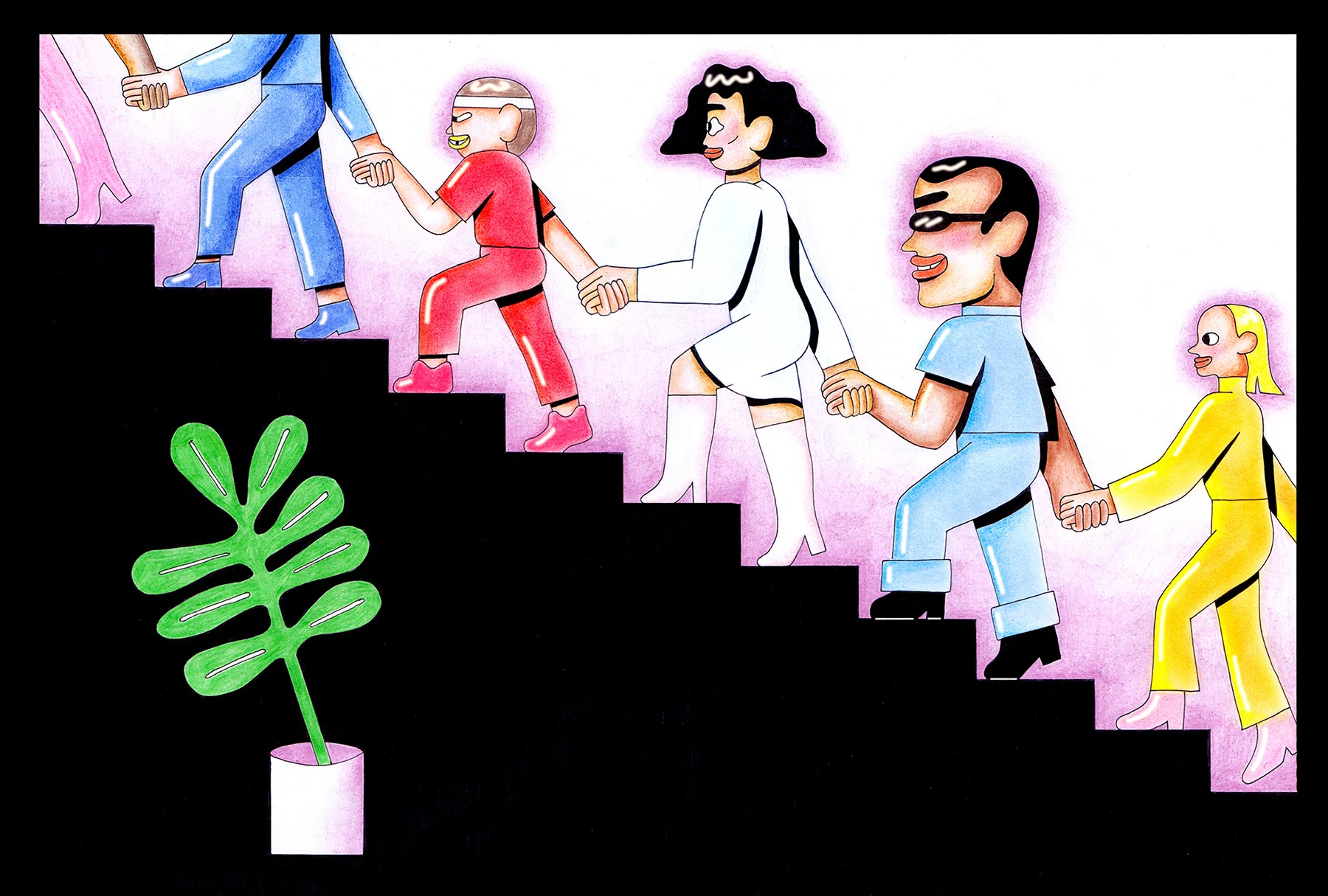
You don’t need an invitation
Knowing the right person can put you in the career fast lane; this isn’t likely to change any time soon. But the creative industry also shows signs of a broken system; one that works for certain groups of people, while creating barriers for others. This is why it’s important to find your allies – creatives you can grow alongside and take with you – because connections who’ve got your back are worth their weight in gold.
And while blockers still exist, it’s also never been easier to take that first step towards building a great creative network. That could mean sharing your work with the world and connecting via Instagram, sliding into someone’s DMs, responding to a thread, or, like Jeff, sending that first email and creating a whole platform of your own. Because, as Sereena reminds us, “If we can’t disrupt an institution from within, the only alternative is to create our own. It’s not about waiting to be invited in.”


